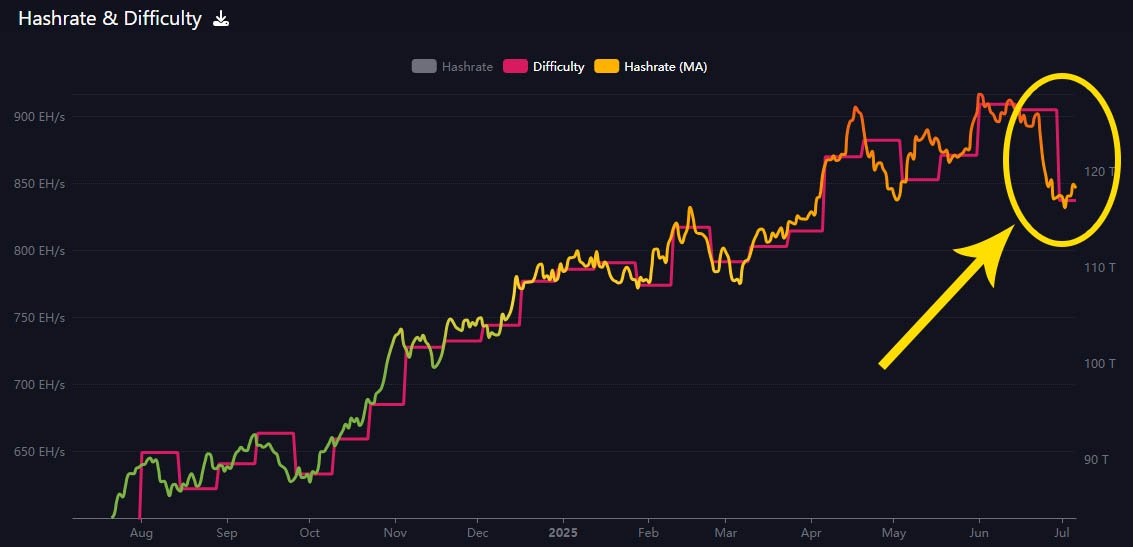June 2025 was a tough month for Texas bitcoin mining as heatwaves, power curtailments, and even flooding combined to take a big bite out of mining output across the state.
Several major bitcoin mining companies – including Riot Platforms, Marathon Digital (MARA), Cipher Mining and Cango – saw significant declines in their bitcoin (BTC) production.
The drop ranged from 7% to 25%, and was mostly due to weather-related power issues and participation in Texas’s grid management programs.
Texas has been a hub for bitcoin mining due to its low energy costs and friendly policies. But the summer heat was intense in June and pushed the power grid to the edge, forcing companies to take measures to avoid high electricity costs and prevent blackouts.
To do this, many miners voluntarily reduced their power use during peak hours – a practice known as “economic curtailment.”
Related: Bitcoin Mining Clean Energy and Grid Balance: ERCOT Study
One of the reasons for the curtailment is Texas’s Four Coincident Peak (4CP) program, which measures and charges large energy users based on their usage during the four highest demand periods of the summer.
To avoid huge transmission fees, bitcoin miners like Riot Platforms and Cipher Mining scaled back operations during these critical times.
Jason Les, CEO of Riot Platforms, said participating in demand response and economic curtailment “significantly contributes to grid stability while enhancing Riot’s competitive positioning.”
Riot mined 450 BTC in June, down 12% from 514 BTC in May. They sold 397 BTC for about $41.7 million, but still maintained a large reserve of 19,273 BTC at the end of the month.
Cipher Mining followed a similar strategy, mining 160 BTC in June and cited their “proactive 4CP avoidance strategy” to keep energy costs low. While their new Black Pearl facility came online at the end of June, it wasn’t enough to offset the production decline.
Marathon Digital Holdings (MARA) took the biggest hit, down 25% from 282 BTC in May to 211 BTC in June.
CEO Fred Thiel pointed to multiple reasons, including weather-related curtailments, old mining equipment, and what he called “natural variability in block luck” which is the unpredictable nature of mining success.
And if the heat wasn’t enough, severe flooding in parts of Texas made mining even more challenging.
Fox News reported that the floods were “devastating”, creating a humanitarian crisis. According to latest reports, the flood left at least 59 people dead, including 11 children.
This highlights the significance and sheer volume of destruction. This natural disaster disrupted local infrastructure, too – including many bitcoin mining operations.
Flood damage and power outages from the storm also led to a drop in global Bitcoin hashrate, a key metric of the network’s computational power. A decline in hashrate is sometimes seen as a bearish sign for bitcoin prices as it may mean instability or operational risk.

According to Mempool.space, Bitcoin network’s mean hashrate dropped from an all-time high of 917 Eh/s on June 1, to 832 Eh/s on July 2, a 10% drop. This caused the network to scale down its difficulty from 126.4 trillion to 116 in its latest adjustment.
Although most companies struggled in June, CleanSpark didn’t.
The company increased its BTC production by 6.7%, mined 445 BTC and sold only 8 BTC. CleanSpark also hit its mid-year goal of 20 exahashes per second (EH/s) and is now in a strong position in the industry.
Despite the challenges, the Bitcoin mining industry is showing signs of life. New companies like Eskom (South Africa’s state power utility), NIP Group and TWL Miner are entering the market, showing continued interest and investment.
